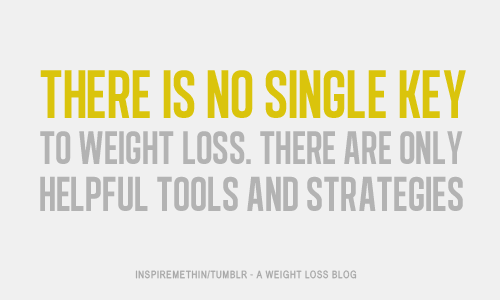Family Health & Fitness Biography
Source Google.com.pk
One of the most important gifts you can pass on to your children is a healthy lifestyle. You’ve probably heard that children learn more by observing their parents than listening to them. My experience leads me to believe this is true, and families who know how to turn movement into fun raise kids who enjoy exercise. What adults call “workouts,” kids call play. Follow these easy tips to build a culture of fitness-play in your family.
Designate specific “dark” times for TV and computer. When you take away these options, kids will find other ways to entertain themselves. And, when they know it’s only for a specific period of time and not forever, they’ll be more willing to comply. With a little direction from you, they can use this time to be active. The important thing is that you have to take your own advice. Whether you are legitimately getting work done on the computer (NOT on Facebook!) or watching the news, your kids won’t be very excited about your suggestions if the rules don’t apply to you. If you ALL agree to leave the electronics behind, your kids will relish the time they have with you and begin to associate exercise with togetherness.
Turn household chores into fun family activities. For example, take the whole family out to wash the car. In between soaking the sponge in the bucket, add a lap around the car and instigate a game of tag. When you need to water the lawn, have a good old-fashioned run through the sprinklers. Time to rake the leaves? Get a big pile going and have a contest to see who can make the biggest jump to spread the leaves out. Yes, you will need to rake and re-create the pile in-between. No problem. That just adds in more activity. Bring a stopwatch and see who can rake the leaves the fastest.
Get a pet (or borrow one.) Years ago, ACE ran a public service announcement that that had a picture of a dog holding a leash and it said, “Think of him has an exercise machine with hair.” A dog is a live-in playmate that never gets tired of walking or chasing the ball or wrestling on the grass. If you are not in a situation where you can own a dog, there is probably someone on your block who would welcome an extra playmate for his or her pet.
Keep music playing in your home and in your car. The best thing about this suggestion is that YOU get to choose the music. You can certainly ask for “requests” from your kids, which helps involve them. Music encourages movement, which can turn into fun and play. Try a family dance contest where family members vote on the best moves. Or have a dance party from a certain era like the ‘80s. Dig out your legwarmers and horrify your teenagers as you demonstrate the Electric Slide. Once they realize none of their friends are in the room, they might just join in.
Learn a new sport together. While it can be fun for you to hand down your sports acumen, it might be more fun for your kids to learn something new with you. That way you are all starting at the same point and no one is considered “better” than anyone else. Martial arts, dance and ladder golf could be a good place to start.
Always have toys with you. In the back of my car, we always keep a football, tennis ball and Frisbee. No matter where we are, if we find ourselves with a few extra minutes, we pull a ball out and play catch. See how many times you can catch the ball without dropping it or add some additional moves between each throw. For example, throw the ball and then turn in a circle before your partner throws the ball back. This is especially helpful when you are waiting in line. You will look at all those poor kids, tugging on their mothers and asking, “How much longer?” with great sympathy as you toss your football to your smiling son or quietly bounce a tennis ball back and forth with your preschooler.
Sneak in exercise everywhere. We have all heard the example of parking farther out in the parking lot to get some extra activity. If you have your family with you, park way out in the lot and turn the walk to the store into some fun. Play a game of follow the leader or skip your way along. If you pick your children up from school, park a few blocks away, walk to meet them, and then head back to the car together. Add in some fun with marching songs (Left, left, left, right, left…) or run in a “daisy chain” where the person in the back runs to the front every 10 steps.
Most parents recognize the importance of nurturing literacy in their children. Learning to read and write are celebrated milestones. Parents start early by reading to their infants, introducing them to the alphabet and phonics in the early preschool years, and then sending them off to kindergarten to solidify their pre-reading skills and becoming novice independent readers and writers by the end of first grade. These skills are further developed and enhanced over the ensuing 11+ years of formal education and into and throughout adulthood.
While a great deal of energy and attention is rightfully devoted to developing this type of literacy, much less time and attention is spent on developing a child’s physical literacy, despite the fact that nurturing physical literacy from a young age is essential for a child’s lifelong success.
Physical literacy describes an individual’s ability to understand and execute movement with confidence, apply movement to physical activities, recognize the benefits of movement, be competent in movement on numerous levels, and inherently enjoy moving and being physically active. Kids with higher physical literacy are more likely to commit to a lifestyle of physical activity and reap its many benefits, including improved school performance, health, social skills, self-esteem and overall well being.
Unfortunately, as more children, adolescents and adults opt for screen time rather than physical activities, and as physical education classes are engineered out of the school day, the physical literacy of children and adults in the United States is at an all-time low. And just like kids who don’t learn basic reading skills at a young age will struggle with reading, kids who don’t learn basic physical movements at a young age will struggle with physical activity and sports.
Dr. Avery Faigenbaum, author of ACE’s Youth Fitness Manual , believes that lack of fundamental movement skills, such as running, jumping and catching, in the first five years of life leads to decreased motor skills and coordination in elementary school, which in turn leads to decreased movement confidence in tweens. I ncreased sedentary behaviors in tweens and teens then leads to increased disease risk factors in teens and young adults, which leads to increased adverse health outcomes in adulthood.
What can be done to reverse this trend? Here are five tips to help you improve your child’s (and, in many cases, your own ) physical literacy:
1. Start nurturing motor- skill development from infancy.
In the first five years of life, the typical child will have at least 11 well- child visits. At every visit, the pediatrician will assess development, including gross and fine motor skills. Take advantage of this opportunity to see how your child’s skills are developing and how you can help to facilitate continued improvement. Here are some typical motor- skill development milestones (as advised by the American Academy of Pediatrics here) and how you can help your child enhance these skills:
At two months, your infant should lift his or her head and chest when in a face-down position. Starting at one month of age, provide your infant with a total of one hour of “tummy time” each day in short spurts lasting several minutes.
At four months, your infant should roll over from back to front, support him- or herself on elbows and wrists (when in face-down position), and begin to grasp objects. Invest in a play mat to encourage your infant to move around and interact with the environment.
At six months, your child should roll over back to front, sit without support and begin to “rake” small objects with four fingers. Provide your infant with at least 60 minutes of active play time each day.
At nine months, your infant should roll to both sides, sit well without support, crawl and transfer objects from hand to hand. Entice your infant to practice rolling and crawling skills by spreading a variety of interesting items across a safe play area.
At one year, your child should stand, begin to walk independently and pick up small objects. Take your child for short walks and encourage his or her emerging motor independence.
At 15 months, your child should walk backward, run and scribble. Encourage your child to show off and practice all of his or her newfound skills (with close supervision to ensure safety).
At 18 months, your toddler should sit, stand, walk independently, walk up steps (while holding your hand), begin to run, and grasp and manipulate small objects. Create a safe environment for your child to run and play.
At two years, your toddler should jump, ride on a toy without pedals, and build a tower with three blocks. Create opportunities for your child to practice these motor skills for a total of one hour each day.
At three years, your child should pedal a tricycle, climb on and off furniture, copy a circle, and draw a person with a head and one other body part. Invest in a tricycle and help your child gain competency in riding it. Also consider tumbling and other activities that promote the development of your child’s basic activity skills.
At four years, your preschooler should be developing coordinated motor skills such as running and kicking, throwing and swimming. Make teaching your child to swim a priority. Also, introduce ball sports and other activities that encourage increasing competency in the basic motor skills like running, balance, jumping and cycling.
At five years, your child is ready to play basic sports, ride a bicycle with training wheels and skip. Provide your child with at least one hour of physical activity per day to practice these skills in a fun and supportive environment.
2. Advocate for physical education in your schools.
While parents are largely responsible for a child’s physical literacy in the early years, physical education programs and participation in sports help older children continue to develop and enhance their physical literacy skills. In many states, local physical education and recreation programs are being cut back due to budget concerns. Start letter- writing campaigns and phone calls to your local government asking them to implement more P.E. and recreation programs.
3. Start slow.
When a child learns to read, they don’t start with a novel. Physical activity is no different. Start slow and w ork at your child’s speed, not yours! Success leads to a positive attitude and improved self-esteem, while failure leads to negative attitudes. Compliment and pat your child on the back, reinforce positive physical behaviors, and build his or her ego. Physical activity can build confidence and spark more interest in future physical activity.
4. Emphasize fun.
It’s not about winning or losing, it’s about having fun and enjoying being active. Kids who have fun participating in activities will participate more, be confident and have more success. They will also be more likely to develop a high level of physical literacy.
5. Model physical literacy.
Remember, physical literacy continues to develop and improve over a lifetime. You hear this time and again: your kids are watching you and will model after you. Let them see you increase your physical literacy as you practice your walking, running, balancing, jumping, swimming, cycling, throwing and kicking skills. Kids who grow up with active parents are more likely to be active themselves. Create a family activity plan in which you go for walks, bike rides or hiking on a regular basis. Many children enjoy family time, so why not make family time active time?










No comments:
Post a Comment